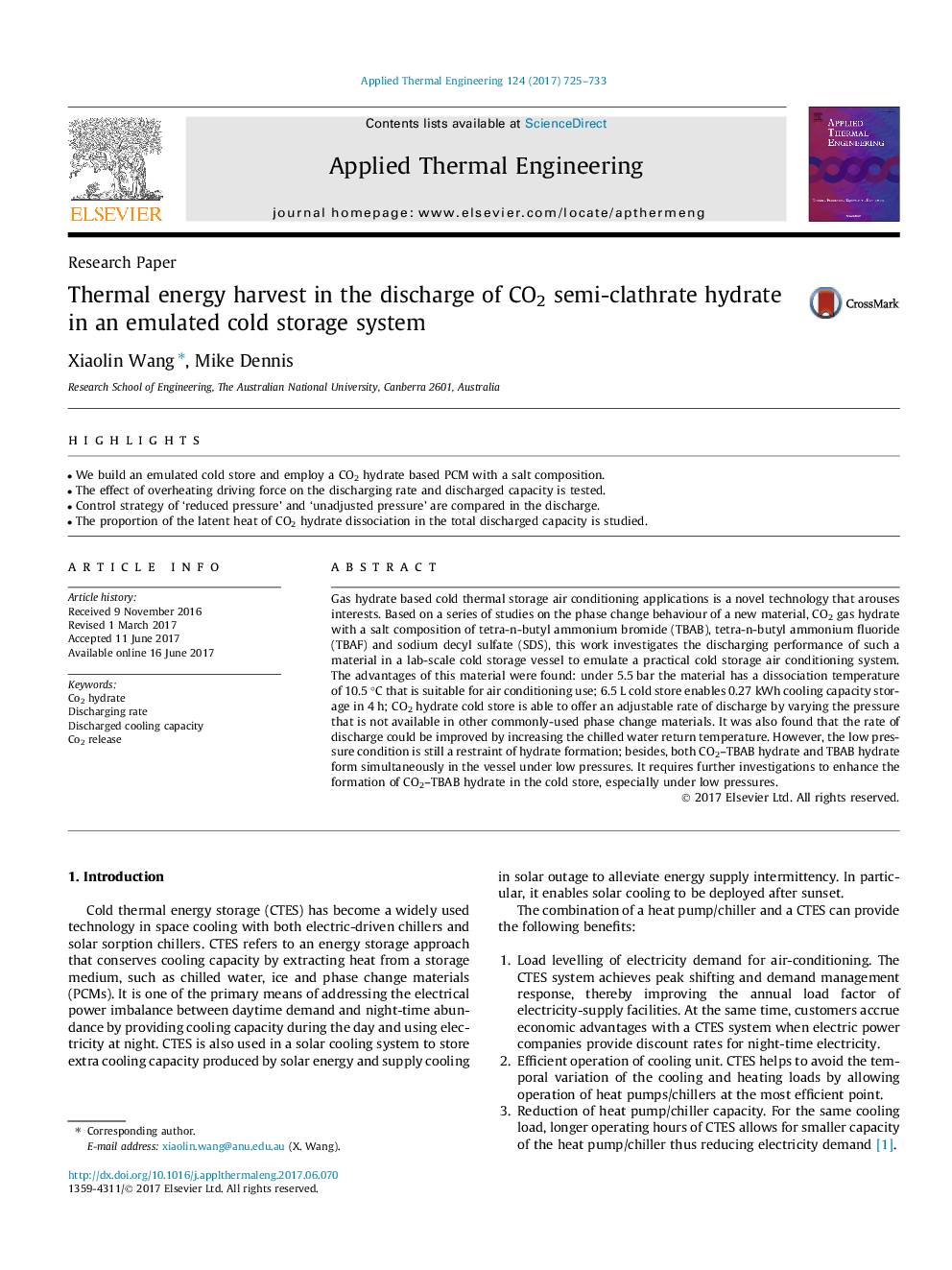| Article ID | Journal | Published Year | Pages | File Type |
|---|---|---|---|---|
| 4990658 | Applied Thermal Engineering | 2017 | 9 Pages |
Abstract
Gas hydrate based cold thermal storage air conditioning applications is a novel technology that arouses interests. Based on a series of studies on the phase change behaviour of a new material, CO2 gas hydrate with a salt composition of tetra-n-butyl ammonium bromide (TBAB), tetra-n-butyl ammonium fluoride (TBAF) and sodium decyl sulfate (SDS), this work investigates the discharging performance of such a material in a lab-scale cold storage vessel to emulate a practical cold storage air conditioning system. The advantages of this material were found: under 5.5 bar the material has a dissociation temperature of 10.5 °C that is suitable for air conditioning use; 6.5 L cold store enables 0.27 kWh cooling capacity storage in 4 h; CO2 hydrate cold store is able to offer an adjustable rate of discharge by varying the pressure that is not available in other commonly-used phase change materials. It was also found that the rate of discharge could be improved by increasing the chilled water return temperature. However, the low pressure condition is still a restraint of hydrate formation; besides, both CO2-TBAB hydrate and TBAB hydrate form simultaneously in the vessel under low pressures. It requires further investigations to enhance the formation of CO2-TBAB hydrate in the cold store, especially under low pressures.
Keywords
Related Topics
Physical Sciences and Engineering
Chemical Engineering
Fluid Flow and Transfer Processes
Authors
Xiaolin Wang, Mike Dennis,
